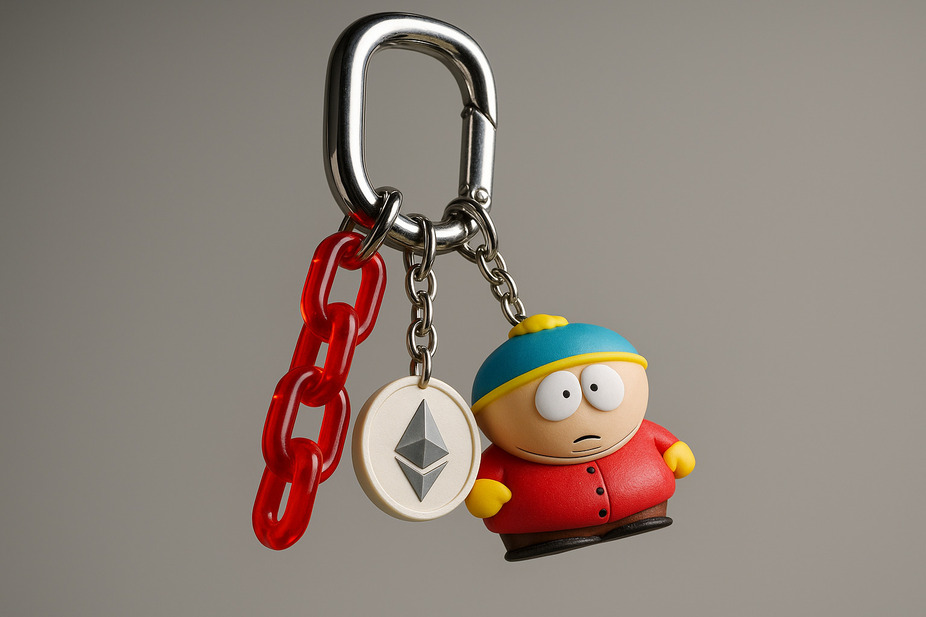From wallets to runways: how crypto and blockchain are becoming fashion’s new best friends

In 2025, the worlds of cryptocurrency and fashion are colliding in unexpected and exciting ways. No longer confined to the realms of tech and finance, crypto is becoming a mainstream force, transforming how we create, consume, and experience fashion.
While many associate crypto with complex financial concepts, its influence is now extending to the runway, with cryptocurrencies and crypto wallets emerging as the latest must-have accessories. The fashion industry, known for its adaptability, is embracing crypto technology to create innovative business models, enhance transparency, and connect with a new generation of tech-savvy consumers.
Today, with over 659 million crypto users worldwide, it’s no surprise that this trend is gaining momentum. This article explores how crypto and fashion are merging to create exciting new possibilities.
Luxury brands embrace crypto payments
Luxury brands are increasingly accepting crypto payments, recognizing the growing purchasing power of crypto holders. As Bitcoin and other tokens gain value, high-end labels are eager to cater to affluent shoppers in the tech world who prefer to transact with their digital assets.
Previously, only a select few brands like LVMH, Hublot, Tag Heuer, Gucci, and Balenciaga accepted crypto. However, in 2025, Triple A reports that crypto payments account for at least 10% of total transactions in the luxury market.
By accepting crypto, fashion brands are expanding their market reach and branding themselves as innovative and forward-thinking. Many luxury labels have even established a presence in upscale Silicon Valley malls to target tech enthusiasts, appealing to a demographic that values cutting-edge technology.
Fashion NFTs: where digital meets design
Digital fashion, once a concept confined to science fiction, is now a reality thanks to the rise of fashion NFTs (Non-Fungible Tokens). Designers are blurring the lines between tangible and virtual fashion, creating unique and experimental designs.
Fashion NFTs offer designers a platform to explore designs without the constraints of physical production. These digital assets enable the creation of impossible or impractical designs, limited-edition releases, and one-of-a-kind items that collectors can showcase in metaverses or trade on digital platforms.
Fashion NFTs offer several benefits:
- Avatar customization: Personalize avatars in virtual worlds with digital fashion items.
- Exclusive ownership: Collectors can own rare digital pieces.
- Designer monetization: Designers can monetize their creations through NFT sales.
- Global reach: Brands can reach a global audience without physical products.
- Royalty opportunities: Smart contracts allow for royalties on secondary sales.
- Direct-to-consumer access: Designers can connect with consumers without intermediaries.
Metaverse runways and storefronts
The metaverse is emerging as a new frontier for fashion, with virtual fashion shows and digital storefronts becoming increasingly popular. Platforms like Decentraland, Roblox, and The Sandbox host immersive fashion experiences that connect users with brands in unprecedented ways.
The Metaverse Fashion Week, which debuted in March 2022, has become a landmark event, featuring global brands such as Elie Saab, Etro, IKKS, Tommy Hilfiger, and Dolce & Gabbana.
These digital experiences offer a more inclusive alternative to traditional Fashion Weeks, allowing anyone with internet access to attend. Viewers can interact with brands, purchase digital versions of outfits for their avatars, and even order physical versions delivered to their homes.
This blend of fashion, entertainment, retail, and technology represents a significant shift in how fashion is consumed.
Blockchain for transparency in the supply chain
Blockchain technology is revolutionizing fashion by addressing the challenges of counterfeiting, ethical sourcing, and environmental damage. As consumers demand greater accountability and transparency, blockchain provides a tamper-proof solution for managing and sharing supply chain data.
Blockchain enables real-time tracking and verification of a product’s lifecycle, from production to consumer. Digital certificates linked to products allow consumers to verify authenticity and track each stage of the supply chain.
Real-world examples include:
- Aura blockchain consortium: Founded by LVMH, Prada, and Cartier, this platform provides product traceability and authentication across the luxury sector. Consumers can scan a QR code on a luxury item to access detailed information.
- Everledger: This technology company helps fashion brands track ethically sourced precious stones, ensuring responsible sourcing practices.
The future of fashion is crypto-powered
The integration of crypto and blockchain technology is transforming the fashion industry, driving innovation and creating new opportunities for brands, designers, and consumers. From luxury payments to digital fashion and supply chain transparency, crypto is reshaping how we experience and interact with fashion.
As cryptocurrency and virtual worlds continue to evolve, the fashion industry is poised for even more significant changes in the coming years. In 2025, crypto and blockchain are not just buzzwords; they are the driving forces behind the future of fashion.












